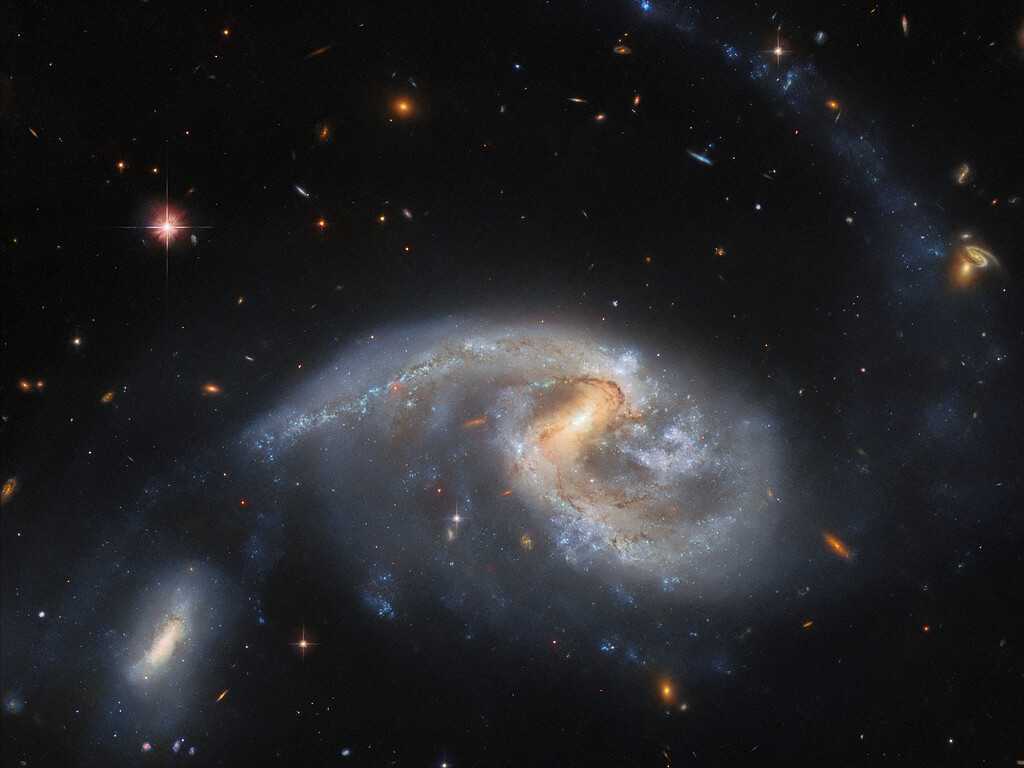Cosmic ballet of two interacting galaxies 160 million light-years from Earth

This image from the Hubble Space Telescope features two interacting galaxies - NGC 5996 (the large spiral galaxy) and NGC 5994 (its smaller neighbour). Together, the two galaxies are known as Arp 72 and they lie approximately 160 million light-years from Earth.
The cores of NGC 5996 and NGC 5994 are separated from each other by a distance of around 67 thousand light-years. The distance between the two galaxies at their closest points is closer to 40 thousand light-years. For context, the distance between our Milky Way galaxy and its nearest neighbour Andromeda is around 2.5 million light-years whereas the Milky Way and its largest and brightest satellite galaxy, the Large Magellanic Cloud, are about 162 thousand light-years apart.
Given the proximity between the two galaxies and the substantial size of NGC 5996, which is comparable to that of the Milky Way, the resulting interaction with NGC 5994 is not surprising. The galactic interaction is believed to have caused the spiral shape of NGC 5996 to distort and apparently be drawn in the direction of NGC 5994.
this cosmic encounter has given birth to a stunning tidal tail—a long, faint stream of stars and gas that extends from NGC 5996 towards the upper right of the image. The tail is a common phenomenon that occurs when galaxies get in close together, as can be seen in several Hubble images.
Enough is an oeuf. Normal service resumes.😉📷 This NASA/ESA @HUBBLE_space Telescope image features Arp 72, a galaxy group that includes two interacting galaxies: NGC 5996 (the large spiral) and NGC 5994 (smaller, lower left). https://t.co/VLM5Zfjm5G
— European Space Agency (@esa) April 1, 2024










